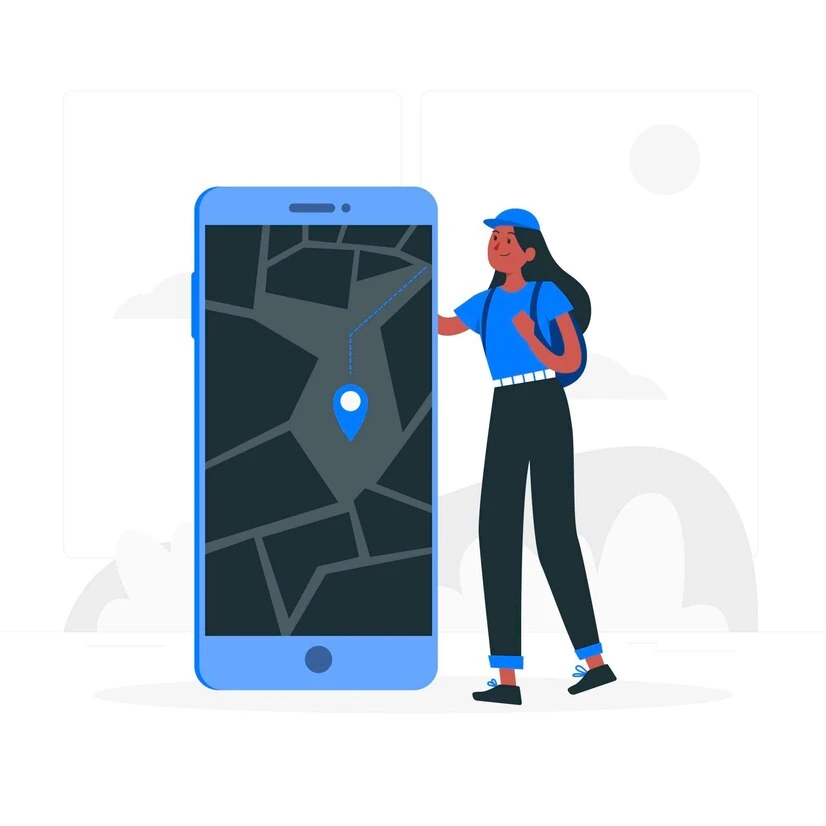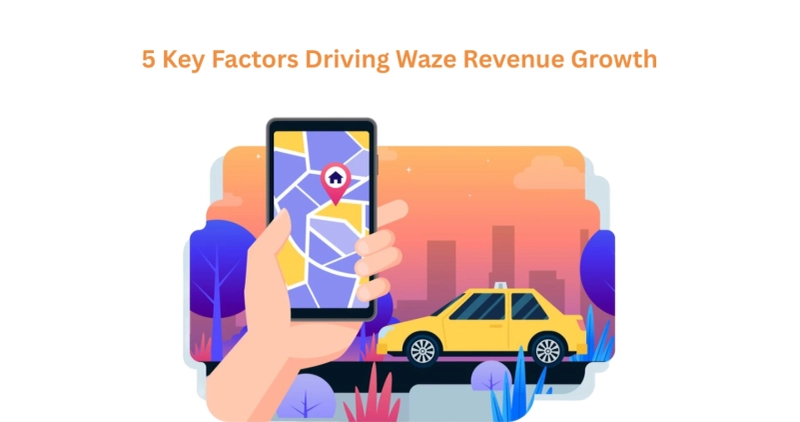Waze, the popular community-driven navigation app, has become one of the most influential tools for drivers around the world. Known for its real-time traffic updates, route recommendations, and active community, Waze has changed the way people think about navigation. But what really makes Waze stand out is its business model. While it offers free navigation to users, the company has developed several innovative strategies to generate revenue.
In this blog, we’ll take a closer look at the five key factors driving Waze revenue growth. From unique advertising methods to strategic partnerships, these factors have helped Waze build a profitable platform while keeping users engaged and satisfied.
In-App Advertising: A Primary Revenue Driver
Localized Advertising
One of the main revenue sources for Waze is its in-app advertising. The app, which is free for users, makes money by displaying ads while drivers are on the road. These ads are carefully designed to be non-intrusive, appearing on the screen in a way that doesn’t disrupt the driving experience. Waze uses geo-targeting to ensure that ads are highly localized, meaning that the ads users see are relevant to their location and driving route.
For instance, if you're driving through a city, you may see ads for nearby gas stations, restaurants, or retail stores. Local businesses pay Waze to have their ads displayed in front of a targeted audience of drivers. This hyper-local advertising approach makes Waze an attractive platform for businesses looking to drive foot traffic to their stores or increase visibility in specific regions.
Branded Pins and Promoted Locations
Another advertising model that Waze uses is the “branded pins” feature. Businesses can pay to have their locations appear as prominent pins on the map. For example, a coffee shop, gas station, or fast food restaurant can pay Waze to make their business stand out on the map when drivers pass by. This helps these businesses attract attention from people who may be traveling through the area.
Similarly, businesses can also pay to have their locations appear at the top of search results when users look for specific types of services, like restaurants or fuel stations. These promoted locations help businesses gain visibility and drive more foot traffic, making it a win-win for both advertisers and users.
Subscription Model: Waze for Broadcasters
Waze Connected with Media Companies
Waze has also tapped into the revenue potential of working with media companies through its “Waze for Broadcasters” program. This program allows broadcast networks, such as TV and radio stations, to access Waze’s real-time traffic data and incorporate it into their traffic reports.
Broadcasters benefit by offering their audience live, up-to-the-minute traffic information powered by Waze, making their news segments more relevant and valuable. In exchange for this valuable data, Waze charges broadcasters for access to the information. This partnership allows Waze to earn revenue while enhancing the quality of traffic reporting on news channels.
Sponsorship of Traffic Reports
In addition to providing data, Waze also allows companies to sponsor their traffic reports. A sponsor may pay to have their branding featured alongside Waze’s real-time traffic updates. This sponsorship model generates additional revenue for Waze and provides companies with an opportunity to showcase their brand to a targeted, engaged audience.
For instance, an automotive company or a car insurance brand could sponsor the traffic reports, increasing their visibility among commuters and drivers. The integration of branded sponsorships alongside traffic data is a clever way to monetize Waze’s platform while providing value to media companies.
Data Monetization: Selling Valuable Insights
Traffic and Location Data
Waze collects vast amounts of data from its user base. This data includes driving patterns, traffic conditions, accident reports, and even the locations of police officers on the road. All of this data is invaluable to businesses and government agencies looking to improve their services, optimize traffic flow, or plan better infrastructure.
Waze monetizes this data by selling it to various entities, such as transportation agencies, municipalities, and logistics companies. For instance, city governments may pay Waze for access to real-time traffic data that helps them make better decisions regarding road construction, traffic light timings, and congestion management. Similarly, delivery companies may use Waze’s data to optimize their routes and improve delivery times.
The data Waze collects also helps with urban planning. Planners can use Waze’s real-time traffic insights to understand congestion patterns and better plan for future development projects. By offering this valuable data to the right buyers, Waze generates a consistent stream of revenue without impacting its user experience.
Partnerships with Local Authorities
Waze has also partnered with local authorities in many cities to provide detailed traffic information that helps improve public safety. In some cases, municipalities pay for access to Waze’s crowd-sourced data to enhance public safety or better manage traffic flow. These partnerships not only benefit local governments but also add another layer of revenue for Waze.
Strategic Partnerships: Expanding Revenue Streams
Collaborations with Ride-Sharing Platforms
Another factor driving Waze’s revenue growth is its strategic partnerships with ride-sharing companies like Uber. By partnering with ride-sharing platforms, Waze provides these companies with valuable navigation services and traffic data, helping their drivers find the best routes and avoid congested areas.
In return, Waze benefits by gaining access to Uber’s large user base and earning revenue from these partnerships. While this may seem like a small piece of the puzzle, it contributes significantly to Waze’s overall strategy of diversifying revenue streams.
Business Collaborations and API Integrations
Waze also partners with a variety of businesses that integrate its traffic data and navigation features into their own platforms. For example, some automotive companies incorporate Waze’s navigation system into their in-car infotainment systems, giving drivers a seamless experience while using the app. These types of integrations create additional revenue streams for Waze through licensing fees and collaborations with hardware manufacturers.
By expanding its partnerships with a wide range of companies, Waze ensures it can tap into different markets, further diversifying its revenue model.
Read More: Careem Clone App Development: Profitable Business Model for 2025
User Engagement and Crowdsourced Data
Crowdsourced Information
One of Waze’s most innovative features is its reliance on user-generated content. Waze users are encouraged to report traffic conditions, road hazards, accidents, and even police presence in real-time. This crowdsourced information is what makes Waze’s traffic data so accurate and valuable.
The more users Waze has, the more data it can collect, which in turn improves the app’s utility for everyone. This user engagement is crucial for Waze’s growth because it allows the app to offer real-time updates that are far more precise than traditional GPS systems. The gamification elements of the app, such as earning points and levels for contributing information, further encourage users to remain active on the platform.
By keeping users engaged and contributing valuable data, Waze continues to enhance its platform, which in turn boosts its advertising potential. Advertisers and businesses are more likely to invest in Waze because of its large and active user base, which guarantees exposure to a highly engaged audience.

Conclusion
Waze’s revenue growth is driven by a combination of innovative strategies, including in-app advertising, subscription models, data monetization, strategic partnerships, and user engagement. These factors have allowed Waze to turn its free navigation app into a highly profitable platform that continues to grow in popularity worldwide.
For companies or developers looking to build a successful app or platform, understanding these monetization strategies can provide valuable insights. Working with an experienced on-demand mobile app development company can help you implement the right features and revenue models to ensure long-term success. Whether through advertising, partnerships, or crowdsourcing, an app development company can help you create a scalable and profitable platform that drives user engagement and maximizes revenue.



